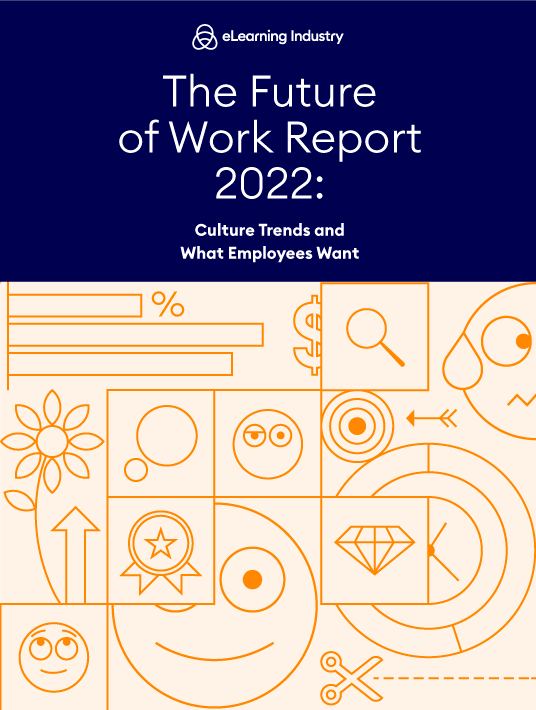Increase Employee Engagement And Reduce Turnover
Between the COVID-19 pandemic and the ongoing labor shortage, many organizations are struggling to find and retain talented employees. For job-seekers, this means new or better career opportunities. For businesses, this makes implementing new internal structures and initiatives an essential part of appealing to and maintaining these workers. While the plight of improving employee retention will require additional effort from organizations, it’s beneficial for both individual employees and the success of the organization in both the short and long term.

Understanding The Different Aspects Of Employee Retention
Employee retention refers to the ability of organizations to maintain their existing workers, and employers play a much larger part in this than they may be aware of. Understanding the different aspects that figure into staff retention can help organizations keep employees happy for longer. That's how you get ready for the future of work.
In 2021, the Bureau of Labor Statistics reported an overall turnover rate of 57.3%, with 25% being accounted for as voluntary employee turnover. [1] These rates are not only detrimental to the productivity of an organization but are also quite costly for the business overall. However, there are several approaches organizations and employers are taking to improve retention and decrease turnover.
11 Tactics To Help Improve Employee Retention
- Making improvements to the recruiting experience
- Optimizing the onboarding process for new employees
- Ensuring employees have the proper tools they need to succeed
- Fostering a positive, inclusive work environment
- Offering hybrid or remote work options
- Improving communication throughout the organization
- Actively avoiding and/or mitigating employee burnout
- Encouraging employees to find a healthy work-life balance
- Offering competitive salary, perks, and benefits
- Providing employee development opportunities
- Focusing on employee wellness
These ideas emphasize the importance of employer action. Organizations that make an effort to see their employees succeed at work are much more likely to see higher retention rates than those that don’t.
The Influence Of Company Culture And A Culture Of Learning On Employee Work
Company culture represents the environment created in a particular workplace, including the values, attitudes, and behaviors of the company and its employees. Fostering a positive workplace culture results in better relationships, open communication, morale, and increased employee productivity.
It’s vital that employers don’t underestimate the influence of company culture on retention. According to statistics highlighted by Jobvite, 32% of workers cited poor company culture as the reason for leaving their job. [2]
Cultivating A Culture Of Learning
94% of employees would be inclined to stay at their job if the company invested in their long-time learning.
Creating a culture of learning in the workplace has been an extremely effective way for businesses to bolster employee morale and retain talent both before the labor shortage and throughout. This is emphasized by a 2021 LinkedIn workplace study which found that 94% of employees would be inclined to stay at their job if the company invested in their long-time learning. [3]
Employee training statistics from Lorman also found that 74% of employees don’t feel they are reaching their full potential due to a lack of development opportunities, while 61% of workers specifically seek these opportunities when considering a job. [4] As learning in the workplace becomes progressively more important to attract and retain the workforce, it’s essential for employers and managers to focus on cultivating this culture and implementing it effectively.
Key aspects of creating a successful culture of Learning and Development include:
- Developing opportunities for continuous learning
- Establishing learning as a core company value
- Empowering managers and employees to lead by example
- Encouraging knowledge sharing
- Fostering a growth mindset
- Offering flexibility and versatility to support independent learning
The most effective way to develop a culture of learning is to instill these ideas in every aspect of the organization. Giving employees the tools they need to grow and succeed not only shows your willingness to invest in their future but will positively impact the company overall. A study from Axonify reports 93% of employees believed a well-planned training program positively affected their levels of engagement [5], and a study from Gallup found 59% less turnover in engaged workers. [6]
Those in Learning and Development are seeing a direct connection between learning and retention. Emerald Works highlights that 66% of L&D professionals said learning and development are becoming a strategic part of their organization because of their positive impact on retention and overall operational efficiency. [7]
How Turnover And Retention Affect Organizations
While turnover rates and retention rates are correlated, they aren’t directly related. However, both are fundamental to consider when prioritizing employee retention—especially if organizations want to keep retention high and employee turnover low.
Organizations see the consequences of low retention and high staff turnover in the form of decreased productivity, avoidable time spent training new employees, increased recruitment costs, and lost sales. A 2020 report from Built In estimated that losing a worker costs approximately 1.5 to 2 times the employee’s salary. [8]
Optimizing The Onboarding Process
Some businesses are avoiding high turnover through an optimized employee onboarding process. Ensuring employees are equipped with the tools and knowledge they need to thrive is of the utmost importance. TechJury supports this by finding a great onboarding experience results in 69% of employees sticking with a company for three years. [9] If your workforce is set up to succeed, you’re much more likely to see higher retention rates and continuously engaged and satisfied employees.
Remote And Hybrid Opportunities
Remote and hybrid work options are also becoming increasingly important for the workforce. A report on the State of Remote Work states 98% of respondents would like to work remotely at least some of the time, and 32% believe flexibility is the biggest benefit of working from home. [10] Implementing strategies that are highly sought after by potential hires is a valuable retention tool, as Lucidchart found companies that offer remote work experience a 25% lower employee turnover rate. [11]
Professional Development Opportunities
For many organizations, reskilling and upskilling will be essential so your employees can grow alongside the business. Reskilling is not only effective for reducing the costs of filling new roles, but it’s also valuable for preparing employees for higher roles within the company. Bonusly highlights 70% of high-retention-risk employees say they would leave their organizations for better career advancement opportunities. [12] Employees who see a future or possible leadership role in the organization are more likely to stick around longer.
Maximizing Retention Through Employee Engagement And Job Satisfaction
71% of executives believe employee engagement is critical to their company’s success.
Smarp reports that a staggering 71% of executives believe employee engagement is critical to their company’s success. [13] Employees who are satisfied and engaged are more likely to stay at their job, be more productive, and have a stronger sense of the company’s mission and purpose. In order to ensure workers are committed and fulfilled, employers can focus on:
- Living the company’s mission, vision, and values
- Recognizing and rewarding employees
- Communicating regularly
- Promoting healthy work habits
- Fostering a supportive and collaborative culture
A performance and retention report from the Corporate Leadership Council specifies highly engaged employees at work perform 20% better and are 87% less likely to leave their current job. [14]
Some of the most important factors affecting employee engagement are management, culture, recognition, and continuous professional development. Not only do workers want to be treated with respect and care, but they highly value the chance to learn and grow.
Consistently weaving positive work aspects, specifically learning and development, into your internal structures, can hugely improve employee satisfaction, engagement, and, as a result, retention.
When employers demonstrate that they’re as committed to employee growth as they are to business growth, people stick around. Get started on your path to building and supporting a culture of learning for employees to thrive long-term and request a demo of Absorb LMS.
References:
[1] Job Openings and Labor Turnover - July 2022
[2] 2018 Job Seeker Nation Study
[3] 2022 Workplace Learning Report: The Transformation of L&D
[4] 39 Statistics that Prove the Value of Employee Training
[6] Employee Engagement vs. Employee Satisfaction and Organizational Culture
[7] Back to the Future: Why tomorrow’s workforce needs a learning culture
[8] The True Costs of Employee Turnover
[9] 33 Startling Employee Onboarding Statistics to Know in 2022
[10] State Of Remote Work 2020
[11] Benefits and challenges of remote workers
[12] 20 Surprising Employee Retention Statistics You Need to Know
[13] 8 Employee Engagement Statistics You Need to Know in 2022
[14] Driving Performance and Retention Through Employee Engagement










